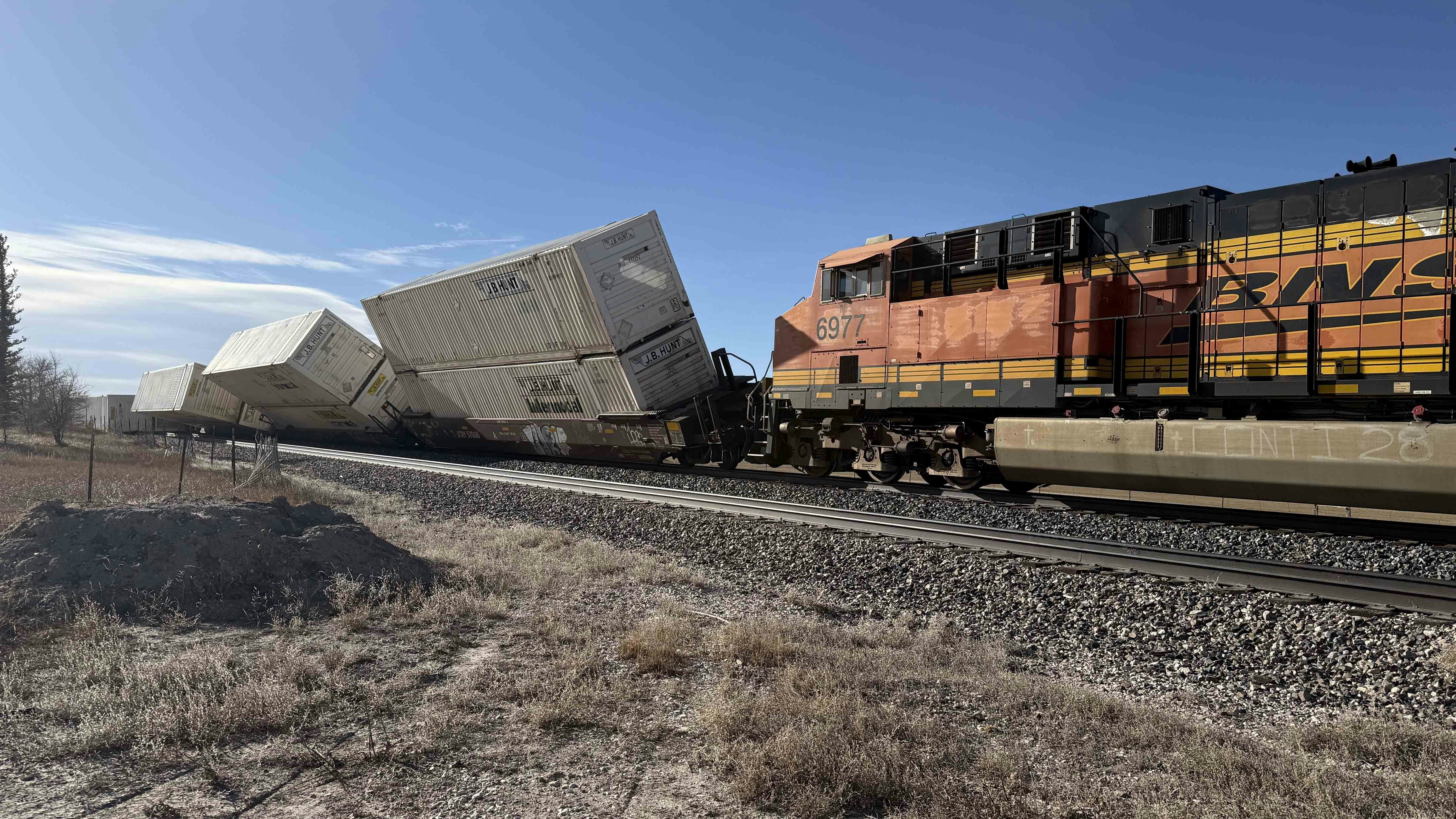Wyoming’s young people leaving the Cowboy State to live somewhere else, a concept called “brain drain,” isn’t the dire problem some believe it is — as long as they eventually come back, said House Speak Albert Sommers, R-Pinedale.
In recent years and at the annual Governor’s Business Forum in Laramie this week, some expressed concerns about the state’s rate of outmigration and the scores of University of Wyoming graduates who leave the state once they graduate.
Anne Alexander, director of outreach and engagement at the UW College of Business Center for Business and Economic Analysis, said only 45% of the state’s population was native Wyomingites as of 2021, one of the lower rates for native residency in the country. According to the U.S. Census, the national average in 2023 for native-born residents living in a is about 56%.
State Auditor Kristi Racines questioned whether this “brain drain” is actually a negative for Wyoming, and Sommers took her question further, saying it can be a positive when UW graduates and Wyoming natives leave the state to see the world.
“Because when they come back to Wyoming, then they have more knowledge and more skills and more ability to improve this state in whatever area they come back in.” he said.
He also wondered how many former UW graduates and natives return in their older years and said Wyoming must create a business and financial climate that is inviting for its native transplants to return to.
“Because they will be a foundation for the future,” he said.
People Have To Live Somewhere
During a panel with four of the five state’s top elected officials, Sommers and Senate President Ogden Driskill, R-Devils Tower, many expressed deep concerns about Wyoming’s housing industry and how it will continue to impact the state’s economy into the future.
Sommers said he sees two issues that are most essential for bringing people to the state: workforce development and housing.
Wyoming’s population is expected to grow by a small margin in 2024, which Alexander said is mostly driven by new residents who are age 65 or older. All other age groups are expected to decline.
Sommers said he sees this elder inflow as part of the problem, as younger workers and homebuyers will struggle to compete with retirees from California who likely sold their previous homes for large sums and have matriculated wealth throughout their lifetimes.
He said the Legislature must actively collaborate with business leaders and, if the government doesn’t at least make an effort to solve those workforce and development problems that keep those high-earning professionals from returning, they’ll never be resolved.
“That can’t come from the caucus of no,” Sommers said, drawing an applause from the audience. “This isn’t about voting no, this is about voting yes.”

Better Paying Jobs
Driskill agreed and said the state needs to work on bringing in more high-paying jobs and pushing business in a positive direction.
He mentioned how his daughter was “trapped” in Oregon. Even though she wanted to return to Wyoming, she was stifled by an inability to find affordable enough housing to support herself based on how much she could earn.
In 2022, housing affordability became a major issue in Wyoming based on the state’s median household income, which Alexander views as a serious roadblock to advancing the state’s economy.
Racines questioned how much Teton County, which has some of the most drastic affordable housing gaps in the state, is affecting this data, but said the state as a whole is grossly behind in having enough available housing that it’s even affecting small rural communities like Upton.
Other Solutions
Driskill mentioned a bill that the state’s Regulatory Reduction Task Force recently drafted legislation that will lower standards in some communities for the approval of new housing, something he believes Wyoming struggles with. He mentioned how around 40% of the cost of building new housing in Cheyenne stems from regulatory costs.
“If we want our economy to grow, we’ve got to find a way that we have housing not just in our big cities, but all across the state,” he said.
Racines said there is no quick fix to the problem, but views private-public partnerships as the best way to address it.
Superintendent of Public Instruction Megan Degenfelder said the government should make it as easy as possible to facilitate these projects without getting too involved itself. A former regulatory lobbyist in the oil and gas industry, Degenfelder said these industries should be invested in and their regulations reduced to help funnel more money for public housing projects.
State Treasurer Curt Meier said the state could leverage its newly released prison population to help build affordable homes at a cheaper cost. He said public money is available and should be used by the state to build affordable housing projects as long as it doesn’t compete with local efforts.
Meier also recommended making a $250 million investment in the state’s retirement system as a form of cost-of-living adjustment, something that has not happened in Wyoming in 13 years.
Boom And Bust
Alexander said she has heard many business leaders in Wyoming lately using the phrase “waiting for the other shoe to drop,”expressing confidence in the current state of the economy but little faith it will continue into the future.
Over the last 40 years, Wyoming has had more economic “bust” years than in the previous 40 years.
Meier asked the audience if anyone there believes nothing should be done to try and correct Wyoming’s boom-and-bust economic cycles, largely driven by the state’s extraction industries.
But Sommers said moving away from minerals can be a difficult proposition to consider because Wyoming’s economy has been largely based on these industries throughout its history. Also, those industries are at least partially the reason for Wyoming’s relatively high quality of services.
Sommers said the state must simultaneously retain its culture while also recognizing that it must continue to grow by promoting positive churn, the concept of a community becoming self-sustaining itself through the creation of new industries and sectors based on its own isolated economy. He said these concepts not only apply to Wyoming’s largest cities like Cheyenne and Casper, but also more medium-sized municipalities like Sheridan, Rock Springs and Laramie.
Not At The Expense Of Our Culture
But most of all, Sommers said Wyoming must retain its rural culture, scenic wildlife, ranching and mineral production that sets it apart from all other states.
“Those things that make us unique in the world,” Sommers said.
During the second quarter of 2023, business filings in Wyoming were up 33% compared to the same time period in 2022 and 48% from that time period in 2021. There was similar growth in quarter three and also growth for total filings, albeit by a smaller number.
This has led to a nearly 25% increase in total receipts for his office during the 2023 fiscal year, reaching $42.3 million.
Driskill said much of this growth is driven by innovation, which he said the state continues to embrace and facilitate.
“Wyoming’s starting to embrace the new end of the world and that’s where our future’s going to be,” he said. “If we want Wyoming to thrive and prosper, it won’t be going back to digging ditches.”
Despite this growth, Secretary of State Chuck Gray said he will not request for more positions in his office for the upcoming biennial budget.
“The Wyoming Secretary of State’s office (goal) is not to grow government,” he said.
Instead, Gray said he will request the Legislature for a new filing system that will make his office more efficient.
Although the overall U.S. economic forecast is becoming more stable than it was in the recent past, there is still a substantial amount of volatility and inflation in the markets.
Wyoming’s inflation based on per capita income is one of the highest in the Rocky Mountain region, only slightly trailing Colorado.
Alexander also said the unemployment rate is so low in Wyoming now that it’s making it difficult for employers to find workers. She expects this rate to slightly increase next year.
But Alexander said business growth has been strong in Wyoming, with the state making substantial gains in research and development in recent years. Sommers noted this as a significant part of the economic puzzle.
“When you can piece research and development with entrepreneurship and you send a graduate out, that’ll help him eventually come back to the state if not immediately be here,” he said.
Leo Wolfson can be reached at leo@cowboystatedaily.com.





